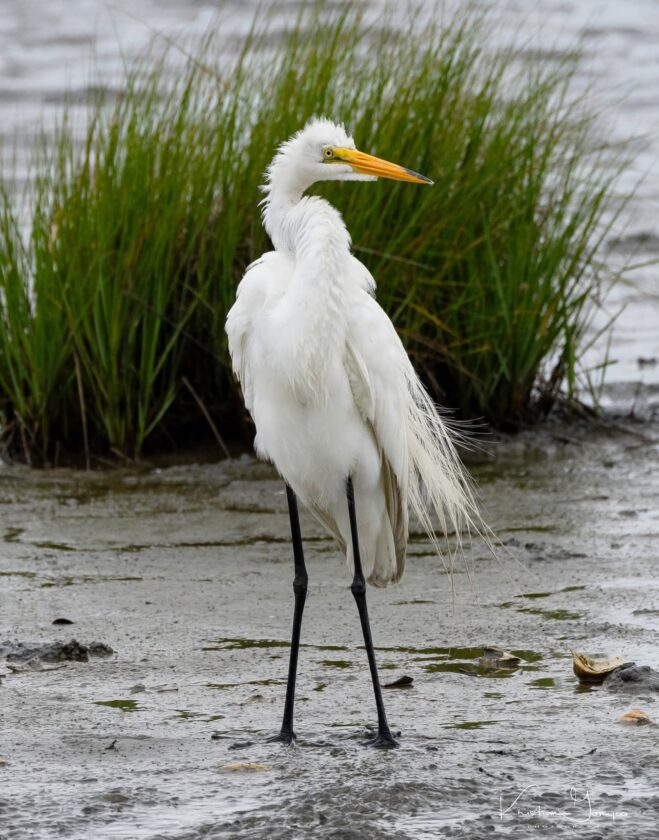Protecting over 48,000 acres of land, the Edwin B. Forsythe National Wildlife Refuge offers itself as a home to more than 360 recorded bird species, including endangered species such as the piping plover, bald eagle and least tern. However, the refuge is more than just a home; it’s an opportunity to study and research some of South Jersey’s local birds, fish and wetlands. Additionally, the NWP (National Wildlife Refuge) records and manages beach areas for nesting endangered birds and collects data regarding different migration paths.
While some celebrate the NWP as a hidden South Jersey gem known for hiking, bird watching and peaceful early morning routine walks, not many know that the nature preserve holds a history rich with ecological significance, conservation efforts, and stories of the people who fought to protect its land.
Originally, what is now named after the American politician Edwin B. Forsythe, the wildlife refuge, was once actually two reserves. The refuge was split into two sections, one in the Brigantine Division and one in the Barnegat Division. Established in 1939 and 1967, the two refuges worked to protect tidal wetland and shallow bay habitat for migratory waterbirds. However, in honor of politician Forsythe’s passing in 1984, the two divisions combined into the official Edwin B. Forsythe National Wildlife Reserve.
Edwin B. Forsythe was born in Chester County, Pennsylvania, in 1916. However, he spent most of his life in Moorestown, New Jersey. He was an active member of various boards in the township and even served as mayor from 1957 to 1962. Forsythe was known as a highly dedicated and conscientious person, so it was no surprise when he became a member of the NJ State Senate in 1964 and Senate President in 1968. Eventually, he was elected to the U.S. House of Representatives’ 91st Congress in 1970 and served seven consecutive terms until he passed away from lung cancer in March of 1984.
During the time he was in Congress, Forsythe played an active role in the establishment of national legislation. Some of these include legislation affecting U.S. maritime policy, the Coast Guard, the Panama Canal, and the Outer Continental Shelf. Additionally, he served on the Subcommittee on Fisheries and Wildlife Conservation and the Environment. The subcommittee worked to develop and protect fisheries, establish wildlife management and ensure environmental protection. Moreover, as an involved member of the committee, Forsythe worked to establish the Marine Mammal Protection Act of 1972 (MMPA). The MMPA of 1972 is a U.S. law that prohibits the taking of marine mammals. This includes harassment, hunting, capturing, collecting or killing in U.S. waters. In addition, it prohibits the import of marine mammals and their products. Congressman Forsythe helped enact the MMPA to address concerns about the decline of certain marine mammal populations and promote their conservation.
In 1976, Congressman Forsythe was the primary sponsor of the Fishery Conservation and Management Act, otherwise known as the 200-mile limit offshore fishing law. This ultimately led to the creation of fisheries management councils and allowed for the Coast Guard to take on responsibility for the conservation zones.
Congressman Forsythe was credited largely with upgrading species protection in the United States. He passed the Endangered Species Act of 1973, which differed greatly from the 1966 legislation. As for the difference, Forsythe’s Endangered Species Act was more involved than its predecessor. The new piece of legislation allowed plants and all invertebrates to be eligible for federal protection. It also required federal agencies to work with the U.S. Fish and Wildlife Service in the event that any of their actions could affect the species listed. Moreover, the Endangered Species Act of 1973 prohibited federal agencies from taking any action that destroys or modifies a critical habitat of any of the listed species.
There is no doubt that Congressman Forsythe contributed greatly to wildlife preservation efforts during his time in Congress. Even before his passing, he helped to obtain around 4,000 acres of marsh habitat near the Mullica River. After his death, Congress approved the renaming of the wildlife refuge. The two divisions, Brigantine and Barnegat, were joined and renamed as the Edwin B. Forsythe National Wildlife Refuge. The renaming ceremony was held on Sept. 22, 1984, in Galloway Township. Even today, Congressman Forsythe is celebrated and missed.

Now, the Edwin B. Forsythe National Wildlife Refuge offers a range of public services such as grant and funding opportunities, photo contests, habitat planning and more. The refuge includes access to activities such as hiking trails, an eight-mile-long driving self-guided tour around the saltwater marsh, biking and birding. The wildlife team encourages all to become involved with their cause. They offer volunteer work and teach how landowners can partner with the Fish and Wildlife Service to voluntarily restore land. Through education, community involvement and hands-on activities, the refuge continues to inspire a deeper appreciation for New Jersey’s natural landscapes while ensuring they are protected and enjoyed by not just visitors but the animals too.
Rebecca Oldham is an emerging journalist and writer located in South Jersey’s Pine Barrens. She enjoys writing about the arts and all things community.
















